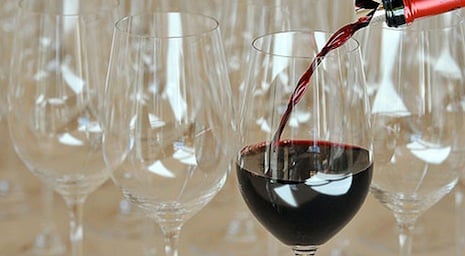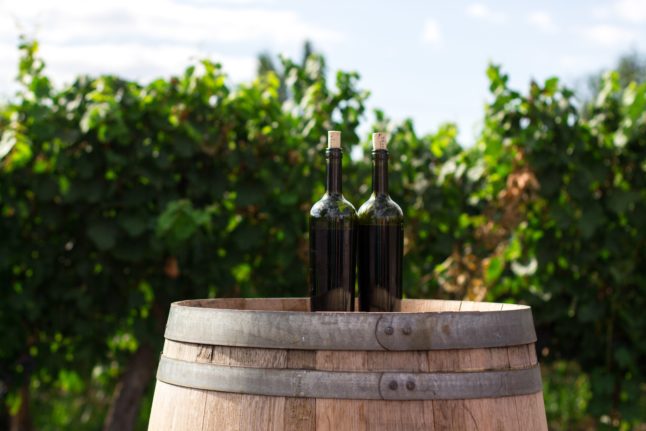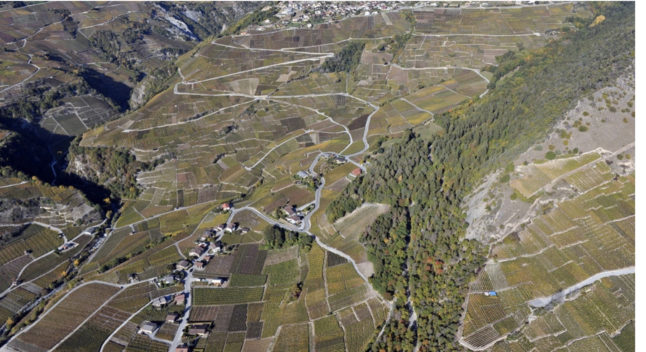Global warming is “positive overall for Swiss wine growers because it guarantees better maturation, especially for late harvest grape varieties,” Vivian Zufferey, from Agroscope, the agricultural research organization, told broadcaster RTS.
In the past 100 years, Switzerland has experienced an average increase in temperatures of 1.6 degrees Celsius, Zufferey told the broadcaster in a report aired on Tuesday.
Temperatures are expected to continue rising in the coming years but it is difficult to predict whether this will lead to dry or humid conditions, she said.
Wine growers can adapt to higher temperatures by leaving more leaves to protect the grapes from too much sunshine, Zufferey said.
Or they can change the varieties of grape, she said.
“The temptation would be to plant varieties more from the south, and there are moreover already some efforts (to do this),” the researcher said.
“We have been able to find Syrah in the canton of Valais (the canton that produces the most wine in Switzerland) for decades, but one could also think of cabernets, for example,” she said.
In the canton of Vaud, there is a trend to planting merlot, another variety from southern France
“That said, it is necessary to remain prudent because certain varieties are difficult when it comes to temperatures and we want a quality product ten years out of ten, not just for one or two years.”
Zufferey said though that there is a tendency for some wine growers to move varieties to different locations to get the best result from climate.
Certain kinds of pinot noir, for example, are being planted at higher altitudes to avoid excessive heat and the risk of maturing too quickly.
A warmer climate will have a tendency to to stimulate a greater accumulation of sugar in grapes, which will change the characteristics of the wine, becoming “heavier” and high in alcohol, Zufferey said.
This can be adjusted by reducing the exposure of grapes to the sun and winemakers can also make adjustments in the cellar to retain the acidity of the wine, she said.
But this change in taste is not necessarily negative, and can give character to a wine, she stressed.
Zufferey said that if the hot weather that Switzerland has experienced so far this year continues the 2015 should be an ideal year for the country’s wines, and those from elsewhere in Europe.
“If the dry and sunny weather continues until September, we have a magnificent grape harvest, no matter what the variety.”
Global warming is not without risks for wine growers, particularly if it leads to extreme weather events linked to heat waves and periods of drought.
These can have negative impacts, such as blocking the maturation of grapes, Zufferey said.




 Please whitelist us to continue reading.
Please whitelist us to continue reading.
Member comments